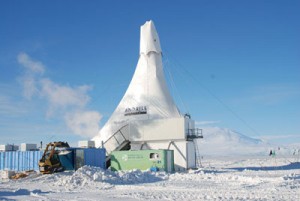Can looking at samples of five million year-old rock sediment tell us the consequences of warming the earth by pumping more CO2 into the air?

According to scientists who have been studying the impact of changes in the earth’s axial tilt during the early Pliocene period (3 – 5 million years ago) when temperatures were warmer than they are today, it certainly can.
Samples taken by the Antarctic Geological Drilling programme (ANDRILL) – an international project involving scientists from New Zealand, Italy, Germany and the United States, have been used in conjunction with ice sheet models to map fluctuations in Antarctic ice volumes over millions of years.
The findings, published today in the journal Nature, aid scientists in predicting the impact of future global warming and suggest that even a slight rise in atmospheric carbon dioxide concentrations affects the stability of the West Antarctic Ice Sheet (WAIS) where the ANDRILL core samples have been taken from.
Click on the player below to listen to an SMC briefing with Professor Tim Naish of Victoria University and Dr Richard Levy of GNS Science, discuss their Nature paper and ANDRILL’s findings.
[audio:https://www.sciencemediacentre.co.nz/wp-content/upload/2009/03/andrill-presentation-audio.mp3]Registered journalists can log-in to download the presentations and associated documents.
News wrap:
Chicago Tribune: ANDRILL drilling yeilds global warming insights
New York Times: West ANtarctic melt a slow affair
The Australian: Rising C02 to trigger ice sheet collapse